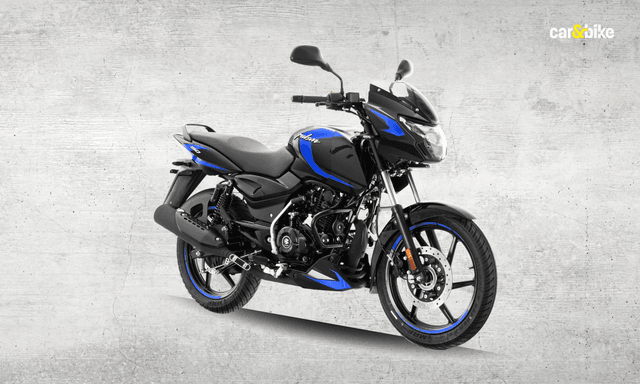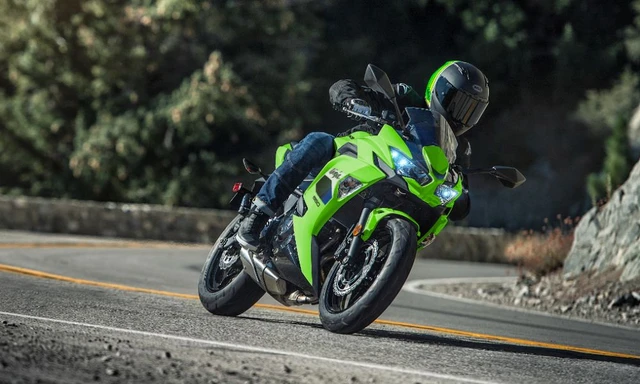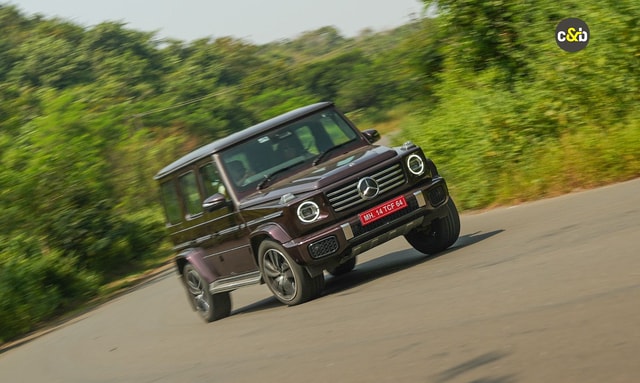Demand For Electric Rickshaws To Grow By 40 Per Cent In Tier 3 And Tier 4 Cities

- Projected to register a CAGR of 31.8 per cent during the forecast period
- The successful penetration of EVs has been observed in Delhi, Maharashtra, Haryana, and Uttar Pradesh states across India
- According to industry estimates, there are currently 2.4 million e-rickshaws operating in India
The electric three-wheeler and electric rickshaw market is experiencing a surge in popularity and demand, particularly in tier 3 and tier 4 towns in India. Industry experts are projecting a substantial growth rate of 40% in this particular sector. Consequently, e-rickshaws are rapidly replacing traditional rickshaws in many smaller towns, with Punjab, Haryana, Uttar Pradesh, and Bihar emerging as key markets.
Also Read: RunR Mobility Unveils New HS e-Scooter With Up To 110 Km Range
The demand for electric rickshaws has witnessed a rise of approximately 38-40%. This shift can be attributed to initiatives in rural electrification and improved access to bank loans, facilitating the transition to e-rickshaws for rickshaw pullers. The E-rickshaw market is projected to register a CAGR of 31.8% during the forecast period, up from US $ 1.3 Billion in 2021 to reach a valuation of US $ 27.5 Billion by 2032.
According to industry estimates, there are currently 2.4 million e-rickshaws operating in India, and this number is expected to grow rapidly as the demand continues to surge. However, the market is currently dominated by unorganized players, holding a 70% market share, while organized players have yet to fully penetrate in the market. The current penetration level stands at around 40% due to factors such as limited awareness about the benefits of electric vehicles, infrastructure challenges in certain regions, and initial investment costs associated with transitioning to electric rickshaws.
Also Read: Enigma Announces Two New E-Scooters: The Crink V1 And GT450 Pro
One of the key factors driving the soaring demand for electric three-wheelers is their cost-effectiveness. With charging costs at around 10 paisa per km and operating expenses averaging less than 50 paisa per km, these vehicles present an attractive option for drivers and businesses.
The successful penetration of EVs has been observed in Delhi, Maharashtra, Haryana, and Uttar Pradesh states across India, with an equal number of towns ready to accept the EV revolution. E-rickshaws, with an average cost of 1 Lakh per unit, can be recovered within two years. The compact size, easy availability, and elimination of charging concerns have been driving the increasing popularity of electric rickshaws, cargo vehicles, and loaders.
Ayush Lohia, CEO of Lohia, highlights the need for a shift in demand toward organized players as the market matures, despite the existing challenges. The advantages of electric three-wheelers are evident, as they can comfortably transport up to 4 passengers, addressing the transportation needs of larger groups efficiently. Additionally, e-rickshaws offer a reliable solution for businesses requiring efficient logistics, with a significant load capacity of 300-350 kg.
Written by: - RONIT AGARWAL
Trending News
 3 mins readWill The Kawasaki W230 Be Launched In India?
3 mins readWill The Kawasaki W230 Be Launched In India?
Latest News
 car&bike Team | Dec 24, 2025Updated Bajaj Pulsar 150 Launched At Rs 1.09 Lakh: Gets LED Lighting, New ColoursThe Pulsar 150 is offered in three variants with prices topping out at Rs 1.15 lakh (ex-showroom).2 mins read
car&bike Team | Dec 24, 2025Updated Bajaj Pulsar 150 Launched At Rs 1.09 Lakh: Gets LED Lighting, New ColoursThe Pulsar 150 is offered in three variants with prices topping out at Rs 1.15 lakh (ex-showroom).2 mins read Janak Sorap | Dec 24, 20252026 Kawasaki Ninja 650 Launched at Rs 7.91 LakhWith E20 compliance, the 2026 Ninja 650 receive a new colour update and a premium price tag.1 min read
Janak Sorap | Dec 24, 20252026 Kawasaki Ninja 650 Launched at Rs 7.91 LakhWith E20 compliance, the 2026 Ninja 650 receive a new colour update and a premium price tag.1 min read Jafar Rizvi | Dec 24, 2025Listed: Car Manufacturers That Will Hike Prices From January 2026Based on the announcements made so far, the price increase across car models is expected to range between 2 and 3 per cent.3 mins read
Jafar Rizvi | Dec 24, 2025Listed: Car Manufacturers That Will Hike Prices From January 2026Based on the announcements made so far, the price increase across car models is expected to range between 2 and 3 per cent.3 mins read car&bike Team | Dec 24, 2025KTM RC 390 Discontinued Globally, Remains On Sale In IndiaThe KTM RC 390 will continue to be offered on sale in India, where it is manufactured and there’s still strong demand for the model.2 mins read
car&bike Team | Dec 24, 2025KTM RC 390 Discontinued Globally, Remains On Sale In IndiaThe KTM RC 390 will continue to be offered on sale in India, where it is manufactured and there’s still strong demand for the model.2 mins read car&bike Team | Dec 23, 2025India Bike Week 2025 In Pictures: Highlights From Edition 12The 12th Edition of IBW was held on December 19 and 20, and if you missed this year’s festival, here is a recap of all that happened.3 mins read
car&bike Team | Dec 23, 2025India Bike Week 2025 In Pictures: Highlights From Edition 12The 12th Edition of IBW was held on December 19 and 20, and if you missed this year’s festival, here is a recap of all that happened.3 mins read Amaan Ahmed | Dec 23, 2025Tata To Enter Rs 40 Lakh Passenger Car Market With First Avinya Electric SUV In End-2026Set to be one of three EV launches from Tata Motors next year, the first in the Avinya series of electric vehicles will catapult the Pune-based carmaker into uncharted market territory, as it will be the most expensive Tata yet.1 min read
Amaan Ahmed | Dec 23, 2025Tata To Enter Rs 40 Lakh Passenger Car Market With First Avinya Electric SUV In End-2026Set to be one of three EV launches from Tata Motors next year, the first in the Avinya series of electric vehicles will catapult the Pune-based carmaker into uncharted market territory, as it will be the most expensive Tata yet.1 min read
 Jafar Rizvi | Dec 24, 2025MG Windsor EV 38 kWh Long-Term Report: IntroductionThe Windsor EV has joined our garage, and before it settles into daily duty, I took it out to get a sense of what living with an electric car is like.4 mins read
Jafar Rizvi | Dec 24, 2025MG Windsor EV 38 kWh Long-Term Report: IntroductionThe Windsor EV has joined our garage, and before it settles into daily duty, I took it out to get a sense of what living with an electric car is like.4 mins read Seshan Vijayraghvan | Dec 23, 20252026 Kia Seltos Review: Formula Is Spot On, But Is The Timing Right?The 2nd-gen Kia Seltos has arrived, but it has the challenge of facing strong rivals like the Victoris and Sierra. The question is simple - Does it still have what it takes?9 mins read
Seshan Vijayraghvan | Dec 23, 20252026 Kia Seltos Review: Formula Is Spot On, But Is The Timing Right?The 2nd-gen Kia Seltos has arrived, but it has the challenge of facing strong rivals like the Victoris and Sierra. The question is simple - Does it still have what it takes?9 mins read Seshan Vijayraghvan | Dec 22, 20252026 Tata Harrier & Safari 1.5 Hyperion Review: By The Power Of Petrol!The new Tata Harrier and Safari petrol packs a new 1.5-litre TGDI Hyperion engine, but is it an ideal alternative to the diesel version?7 mins read
Seshan Vijayraghvan | Dec 22, 20252026 Tata Harrier & Safari 1.5 Hyperion Review: By The Power Of Petrol!The new Tata Harrier and Safari petrol packs a new 1.5-litre TGDI Hyperion engine, but is it an ideal alternative to the diesel version?7 mins read Bilal Firfiray | Dec 19, 2025Maruti Suzuki e-Vitara Review: Worth The Wait?After a long wait, the first-ever electric Maruti Suzuki is here. It’s the e-Vitara, and it comes with a few promises. But arriving this late, is it worth the wait? Or is it a case of too little, too late?9 mins read
Bilal Firfiray | Dec 19, 2025Maruti Suzuki e-Vitara Review: Worth The Wait?After a long wait, the first-ever electric Maruti Suzuki is here. It’s the e-Vitara, and it comes with a few promises. But arriving this late, is it worth the wait? Or is it a case of too little, too late?9 mins read Bilal Firfiray | Dec 18, 2025Mercedes-Benz G450d: The Subtle Power of EvolutionThe Mercedes-Benz G 450d evolves subtly with more power, improved efficiency, and modern tech, while staying true to the timeless G-Class design. And character.4 mins read
Bilal Firfiray | Dec 18, 2025Mercedes-Benz G450d: The Subtle Power of EvolutionThe Mercedes-Benz G 450d evolves subtly with more power, improved efficiency, and modern tech, while staying true to the timeless G-Class design. And character.4 mins read































































































































